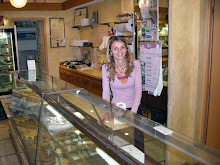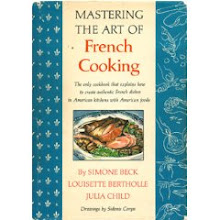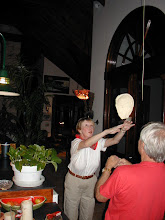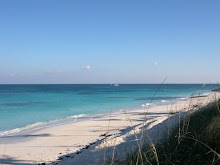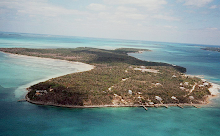Showing posts with label Pierre Franey. Show all posts
Showing posts with label Pierre Franey. Show all posts
Thursday, January 19, 2012
Dreaming of the South of France and Seafood Stew
Lately I’ve been daydreaming about the South of France and my thoughts turned to the fragrant bouillabaisse that we shared with friends at a bistro in the Vieux-Port area of Marseille several years ago. Unfortunately I happen to be far from the steps of the Mediterranean Sea at the moment, so I’m unlikely to find the variety of fish that is abundant there. But I’m not letting that stop me from making a fish stew.
I normally use a mild flavored white fish, such as halibut in this stew. However, we eyed a bag of assorted octopus, cuttlefish and squid in the frozen seafood section of our local market the other day and decided to use it instead. It was a success and we will definitely use it again when we can get our hands on it. However, don’t let not finding that seafood assortment stop you from making it. It’s a terrific stew no matter what kind of mild fish you find in your market. Maybe you'll even dream of Marseille.
Seafood Stew
Adapted from Pierre Franey’s Low Calorie Gourmet – serves 6
3 tablespoons olive oil
½ cup finely chopped onion
1 tablespoon finely chopped garlic
½ cup chopped fennel (excluding the leaves)
½ cup peeled and chopped carrot
½ cup chopped leek, cleaned, white part only
1 dried hot red pepper, crushed
1 bay leaf
½ teaspoon dried thyme
1 cup dry white wine
1 cup chopped canned whole tomatoes
2 cups water
Kosher salt and freshly ground black pepper
1 pound bag of frozen mixed seafood containing octopus, cuttlefish and squid – or - if unavailable, 1 pound boneless white-fleshed, nonoily fish such as halibut, striped bass or red fish, cut into ¾” cubes
1 tablespoon Pernod, Ricard, or any other anise flavored liqueur (optional, but will impart the flavor of the South of France and Marseille)
½ pound small scallops
½ pound shrimp, preferably wild caught, peeled and deveined
18 mussels
18 small to medium sized clams
¼ cup finely chopped fresh flat-leaf parsley
Heat the olive oil in a kettle and add the onion, garlic, fennel, carrot, and leek. Cook the vegetables until they wilt, taking care not to burn the garlic.
Add the crushed hot pepper, bay leaf, thyme, wine, tomatoes, water, and Pernod if using.
Bring the mixture to a boil and add the salt and pepper. Cover the kettle tightly and simmer for 15 minutes.
Add the frozen seafood mixture (or the fish) along with the Pernod if using and cook for 2 – 3 minutes. Add the scallops, shrimp, mussels, and clams. Cook for another minute or two until the mussels and clams have opened, discarding any that do not open. Take special care not to overcook the seafood.
Sprinkle the stew with the parsley and serve immediately with crusty toast fingers or a French baquette to soak up the briny juices of the stew.
Here’s to dreaming of seafood from the Mediterranean Sea and the South of France. Bon Appetit!
I will be linking this seafood stew to Miz Helen’s Country Cottage Full Plate Thursday and Foodie Friday at Designs by Gollum.
Monday, February 28, 2011
Do you have seasonal recipes that you forget to serve when the season rolls around?
Do you have seasonal recipes that you love and somehow, when the season rolls around, you forget to serve them? It happens to me more often that I’d like to admit and it took one of you to remind me.
Take this orange salad for instance. I had completely forgotten about it this winter until Chris of Nibble Me This participated in a Culinary Adventure Challenge recently and posted a version of this salad on his blog. He and his wife Alexis gobbled the salad down while he prepared perfectly cooked lamb chops, macaroni, and a Napa cabbage gratin that he says was crazy good to complete the challenge. I owe you Chris. This salad had completely slipped my mind.
Citrus salads are a great substitute for tomato salads when tomatoes are tasteless and not in season. If you’ve a frequent reader, you might remember this salad. I took it to a blogger get-together in Tennessee and later, two of my friends – Larry of Big Dude’s Eclectic Ramblings and Lea Ann of Cooking at the Ranch made versions of it. Larry served it with coconut shrimp and Lea Ann incorporated it into a camping trip. Now Chris has “kicked it up a notch” and used blood oranges (the glamour queen of oranges) and added feta cheese. All in all, this orange salad with its bit of sweet and spicy taste is a winner and goes with many different entrees.
It’s a hastily made, colorful salad that I found in one of Pierre Franey’s 60-Minute Gourmet cookbooks many years ago. At our house, we call this “Pierre’s salad.” Pierre Franey was a French chef who ran the kitchen at Le Pavillon restaurant in New York City for years. Pierre went on to write newspaper columns for the New York Times, penned some of my favorite cookbooks, and work alongside his dear friend Craig Claiborne, who practically taught my generation how to cook along with Julia Child.
Salade d’Oranges et Olives Noires
Orange and black olive salad adapted from 60 Minute Gourmet by Pierre Franey
1 each large navel orange and tangelo, or two navel oranges
8 black imported black olives, cut in half (I used Kalamata)
1 teaspoon sweet Hungarian paprika
½ teaspoon finely minced garlic
1 tablespoon red wine vinegar
3 tablespoons extra virgin olive oil
1 heaping teaspoon freshly chopped fresh rosemary (optional, but delightful)
Sea salt and freshly ground black pepper to taste
Slivers of red onion
Chopped fresh flat leaf parsley
Trim off the ends of the orange and tangelo. Peel them, then cut into quarter inch slices, and put them in a mixing bowl. Add the olives.
Put the paprika, garlic, vinegar and oil, rosemary, salt and pepper in a jar with a tight lid and shake well to make vinaigrette. Pour the vinaigrette over the oranges and olives and toss well. Sprinkle with slivers of red onions, chopped fresh parsley, and serve. Easily doubled or tripled.
Do you have favorite dishes that you forget from time to time? Please tell me, because I need some reassurance that I’m not alone in this.
Tuesday, March 30, 2010
Chicken Marengo – the famous French dish invented by Napoleon’s battlefield chef to celebrate Napoleon’s success in northwest Italy in 1800
Chicken Marengo is one of our favorite easy “go-to” dishes. If you use boneless, skinless chicken breasts, it can easily be made in under an hour and the wonderful history alone is enough reason to serve it at a dinner party. A great conversation starter at the table is to tell your guests about its colorful history.
Napoleon’s chef was a man named Durand. According to legend, when Napoleon defeated the Austrians on the battlefield near the village of Marengo in northwest Italy in June of 1800, Durand created the dish Chicken Marengo. The supply trains hadn’t been able to keep up with the troops, so there wasn’t anything with which to make dinner for the temperamental Napoleon. Durand decided to send some of his men into the countryside to find provisions for a celebration dinner. On a nearby farm they found chicken, mushrooms, tomatoes, onions, olive oil and garlic.
There are dozens of stories about the creation of the actual dish. Some say it was garnished with crayfish and fried eggs; others insist it included olives, anchovies, and Italian Prosciutto, which would make it Chicken Provencale.
It’s simple to use Chicken Marengo as a base recipe for Chicken Provencal. Just exclude the mushrooms and add the prosciutto, olives and anchovies. If you’re not an anchovy fan, simply leave them out. I usually don’t mention the anchovies and follow Mario Batali’s rule of “you’re not obliged to tell.”
Just for fun, I combined the two dishes today and included mushrooms, prosciutto, olives and anchovies. I like to serve this with parsley rice that I’ve molded into a small dish. Spray a mold with a bit of cooking spray and pack the rice in well. To serve, invert over a plate and carefully remove the mold.
Chicken Provencal
Adapted from A Jug of Wine by Morrison Wood & 60 Minute Gourmet by Pierre Franey
4 skinless, boneless, chicken breasts, about 6 ounces each
Kosher salt & freshly ground black pepper
All purpose flour
¼ cup extra virgin olive oil
4 small yellow onions, peeled and chopped, about 1 cup
1 ½ cups sliced fresh button mushrooms
2 teaspoons chopped Italian flat leaf parsley
1 clove of garlic, finely minced
Generous pinch of dried thyme and oregano
½ cup Italian Prosciutto, diced
1 14-ounce canned whole tomatoes, cut into pieces, juices reserved
1 cup dry white wine
1 tablespoon brandy
1 tablespoon tomato paste
1 tablespoon flour
4 – 6 chopped good quality anchovies, chopped (optional, but recommended)
1 cup olives, preferably small French ones
Dry the chicken well and season with kosher salt and freshly ground black pepper. Dust the chicken pieces lightly in flour. In a large skillet heat the olive oil and sauté the chicken until it is golden brown, turning frequently so that all pieces are done evenly. If they don’t all fit, cook them in two batches. Do not crowd in the skillet or they will steam. When the chicken is browned nicely on both sides, remove and cover to keep warm.
In the same skillet put chopped onions, sliced fresh mushrooms, minced parsley, and, if necessary, a little more olive oil. Cook until the mushrooms are tender, seasoning the mushrooms with salt and freshly ground black pepper as they cook. Add garlic and cook for one minute more. Add the thyme, oregano, and prosciutto cook for another minute, and then add the tomatoes, dry white wine, brandy, tomato paste and flour. Mix and blend the ingredients well, and allow it simmer over a medium flame for about 10 minutes. Now put the chicken back in the sauce, cover the pan, and cook for about 30 minutes, or until the chicken is completely tender. Add the anchovies to the sauce about 10 minutes before it is ready and the olives five minutes before you serve. Serve in the sauce. If the sauce is too thick, add a little of the reserved tomato juice. Serves 4.
Tuesday, January 12, 2010
A drive through Florida’s southern Heartland – the Florida you won’t find in the tourist guide books including orange groves & sugarcane fields
We’re currently at our little “home away from home” in Ft. Myers, Florida. Our plans were to escape the cold weather at home and enjoy some of Florida’s typical balmy days. So far that hasn’t happened but the weather seems to be improving today. As you’ve seen in the news, it’s been very cold in Florida with temperatures dropping into the low thirties for several nights, which caused great alarm to the citrus growers and farmers of the area and upset my husband because it killed his freshly planted basil and some of the shrubbery.
Yesterday we were suffering from cabin fever so we drove from Ft. Myers, which is in southwest Florida on the Gulf of Mexico to Stuart on the east coast on the Atlantic Ocean just north of Palm Beach – about a three hour drive. Our route on Highway 27 and 80 east took us along the orange groves and sugarcane fields in Florida’s Heartland, a place likely you haven’t been and you won’t find it in the tourist guide books. Above is an orange tree in a grove along the way. Notice the ice under the trees. We’ve seen on the nightly news that growers have sprayed their trees with water to help prevent damage to the fruit.
Ice at base of orange tree
We drove through the small towns of Clewiston, South Bay, Belle Glade and Pahokee, through the sugarcane fields along the southern tip of Lake Okeechobee. Even though Belle Glade and Pahokee are in western Palm Beach County, it’s not the ritzy Palm Beach of Donald Trump, famous stars and Carmine’s Gourmet Deli that we visited last week. This part of Palm Beach County is referred to as “Muck City,” according to Wikipedia, due to the large quantity of muck in which sugarcane grows. About half of the sugarcane in the nation is grown in the plains around Belle Glade and Clewiston. This area is more associated with the Florida Heartland than south Florida. According to the Florida Plants website, the sugarcane area is so compact that most Florida visitors never see a sugarcane field so we took some pictures of the various stages of the sugarcane’s growth.
Sugarcane is a tropical grass native to Asia and the plumes you see here blowing in the wind are the flowers and seed heads of the cane plant. Each plume contains several thousand tiny flowers and each flower is capable of producing one seed. The cool winter weather in Florida ordinarily prevents the development of the seeds. Sugarcane is harvested from late October through mid-April. Florida is the largest producer of sugarcane and there are two sugar refineries here, one in South Bay and the other in Clewiston, which their Chamber of Commerce calls “America’s sweetest town.”
The Florida Plant website attributes the fertile organic soil and warming influence of Lake Okeechobee as the primary reasons the sugar industry is located here. The cane fields run along the south side of the lake and the built-up dikes.
Locals call Lake Okeechobee “The Lake” or “The Big O.” According to Wikipedia, it’s the second largest freshwater lake in the continental US after Lake Michigan. It’s about half the size of the state of Rhode Island and is shallow with an average depth of only nine feet.
Locks before entrance to the lake
Boats use the Okeechobee waterway to cut cross the state of Florida to avoid going around the southern tip by the Florida Keys. From the East Coast boaters take the Inter-coastal waterway to Stuart and the St. Lucie River or they can enter from the Gulf of Mexico from the Caloosahatchee River in Ft. Myers. The boats go through a series of locks from Stuart into the actual Lake itself.
Here’s a gorgeous cabin cruiser, probably fifty feet long, with beautiful bright work traveling along the waterway. As you can see, the waterway is narrow and reminiscent of the Everglades. We didn’t see any alligators, but it sure looks like a place you would find them.
Here’s a gorgeous cabin cruiser, probably fifty feet long, with beautiful bright work traveling along the waterway. As you can see, the waterway is narrow and reminiscent of the Everglades. We didn’t see any alligators, but it sure looks like a place you would find them.
We picked up some fresh oranges and tangerines and made a simple Orange Salad when we returned home to go with grilled chicken breasts for dinner. It’s a hastily made, colorful salad of thinly sliced oranges and black Kalamata olives dressed in vinaigrette and sprinkled with fresh Italian parsley and fresh rosemary and slivered red onions. You can also use blood oranges, which make it even more beautiful. I found this recipe in one of Pierre Franey’s 60-Minute Gourmet cookbooks many years ago.
I toss thinly sliced oranges in a bowl with vinaigrette of one part red wine vinegar to three parts extra virgin olive oil seasoned with minced garlic, some Hungarian paprika and salt and pepper to taste and dress as above. You can leave out the black olives or the rosemary if you wish. I’m a big fan of rosemary, as you know, so I use it whenever I can.
For better viewing of photos, click to enlarge.
Tuesday, August 25, 2009
Broiled Salmon with Heirloom Tomatoes & Fresh Basil

I originally found this recipe in Leslie Grover Pendleton’s fabulous book Simply Shrimp, Salmon and Fish Steaks. Leslie calls it sautéed salmon smothered in summer and it is definitely a summer dish to be made when the tomatoes are at their peak and the basil is fresh. It is healthy, easy to prepare and can be served warm or at room temperature. It truly is summer at its finest.
I’ve adapted Leslie’s recipe to our taste by broiling the salmon, which is our favorite method of cooking salmon and one we learned from Pierre Franey in The 60 Minute Gourmet. For the tomatoes I’ve used heirloom ones from our own garden. Cherokee Purples, Mortgage Lifters, Mr. Stripey and Brandywine are my favorites. Serve with asparagus or green beans with lemon and butter, as we have here.
Broiled Salmon with Heirloom Tomatoes & Fresh Basil
Adapted from Simply Shrimp, Salmon, and Fish Steaks by Leslie Grover Pendleton and The 60 Minute Gourmet by Pierre Franey
1 large vine-ripe tomato, preferably an heirloom
½ cup finely chopped fresh basil leaves
1 tablespoon fresh lemon juice
1 tablespoon extra virgin olive oil
1 boneless salmon fillet, about 1 ½ lbs
Canola or peanut oil
Coarse kosher or sea salt
Freshly ground black pepper
Dice the tomato, season with salt and pepper and transfer it, along with all of its juices, to a bowl. Add the basil, lemon and 1 tablespoon olive oil and combine well. Let the sauce sit while preparing the salmon.
Preheat the broiler. Arrange the pieces of salmon in one layer on an unheated broiler tray or sheet pan, drizzle with a little oil and sprinkle with salt and pepper. (I usually line the pan with heavy duty foil for easy clean-up). Place the salmon under the broiler about six to seven inches away from the source of heat. Broil about 7 to 8 minutes or just until the pieces are cooked through. It is not necessary to turn the salmon. If it starts to burn, change from broil to bake and bake at 400 degrees until the salmon is done but still a little pink on the inside.
Slide the salmon onto a platter (with the skin side down) and smother, as Leslie calls it, with the tomato and basil mixture. Let it stand for at least 10 minutes to absorb some of the juices before serving. The salmon can stand at room temperature for up to 45 minutes or it can be refrigerated for up to 24 hours. Serves 4.
Kreativ Blog Award
.jpg)
I wish to thank Helene of La Cuisine d’Helene for the Kreativ Blog Award. I am deeply honored. She shares my passion for good food, is an incredible photographer and has some fabulous food on her blog. If you love good French bread which I do, check out Helene’s baguette or her post on Julia Child’s Mousseline au Chocolate.
The rules that accompany the award are:
1- Thank the person who awarded you
2- Copy the logo and paste it on your blog
3- Link to the person who nominated you for the award
4- Name (up to 7) things about yourself that people might find interesting
5- Nominate (up to 7) other Kreativ Bloggers
6- Post links to the blogs you nominate
7- Leave a comment on each of the blogs to let them know they’ve been nominated
I am passing the Kreativ Blog Award to some of my newest friends that I think you will enjoy as much as I do. Be sure to drop by and say hello.
- Laura’s Paris Cooking Notebook. Laura’s home base is Paris and she has incredible posts of her journeys and great food along the way. She grew up in Uruguay with a French grandmother. Don't miss her meal in the Loire Valley of France.
- Beauty Does Matter. Bella believes that surrounding yourself with beauty makes a difference in life, which I totally agree with. Her post of Loving Lavender is a perfect example along with the beautiful pink hydrangeas that greet you at the top of her blog.
- La Bella Cook, enjoying one recipe at a time. She is currently featuring Coquilles Saint-Jacques Provencale, one of my French favorites, but you’ll also enjoy the Spinach and Blood Orange salad with raspberry vinaigrette.
- Mystery Lovers Kitchen where six mystery writers, Avery, Julie, Jenn, Riley, Cleo and Krista share the blog and cook up crime…..and recipes too. They feature a weekly contest where they award $25 gift certificate to Williams Sonoma. If that’s not reason enough to click over, then their post Death by Chocolate -what a way to go, should get your attention.
Following rule number 4 of the award, here are a few things about me: I grew up in a small town in southeast Arkansas and graduated from college with a Bachelor of Business Administration, which during the sixties was considered a man’s degree. I was the only woman in all of my college business classes and, as far as I know, the first to graduate from the Monticello campus of the University of Arkansas with this degree. Obviously skipping a class was out of the question as my absence would have certainly been noticed. My first career was in management for what I call big league retailers, such as Federated Department Stores, Saks Fifth Avenue as well as Estee Lauder, where I had an opportunity to travel. Like many couples, we moved a lot with our careers and lived in many different places over the years.
Later I joined my husband in his business and we owned an industrial supply company where I was able to put my purchasing and marketing skills to good use. It was quite a change from face creams and lipsticks to pipe wrenches and screwdrivers. We retired early when my husband was fifty-three and followed our dream of living on a tiny tropical island in the Bahamas for ten years. There we had the time of our lives, but sooner or later one has to move back to reality and we now live, as you know, in the beautiful cool mountains of western North Carolina. I love anything French, adore Provence and collect early American antique furniture. I listen to classical music and Jimmy Buffet tunes. I am an avid reader, watch golf and tennis. I became a Nascar fan when we lived in the islands and some of the drivers and car owners brought their yachts and sportfish boats to a marina near us in the summer (little Dale is my man). .
Here’s an old publicity photo taken for the Houston newspapers when I worked for Estee Lauder in the mid seventies.

That’s me on the left with the short blonde curly hair standing next to then Houston Mayor Fred Hofheinz, whose father Roy Hofheinz (who also was a Mayor of Houston), built the Astrodome and created the Houston Astros. Standing between my two Lauder colleagues is New York City Mayor Abe Beam. New York City’s Tourism Directors had just chosen “The Big Apple” as their new advertising campaign and Mrs. Lauder created a fall line of apple colors to promote the new city logo and we’re showing it off to the mayors.
Subscribe to:
Posts (Atom)




























